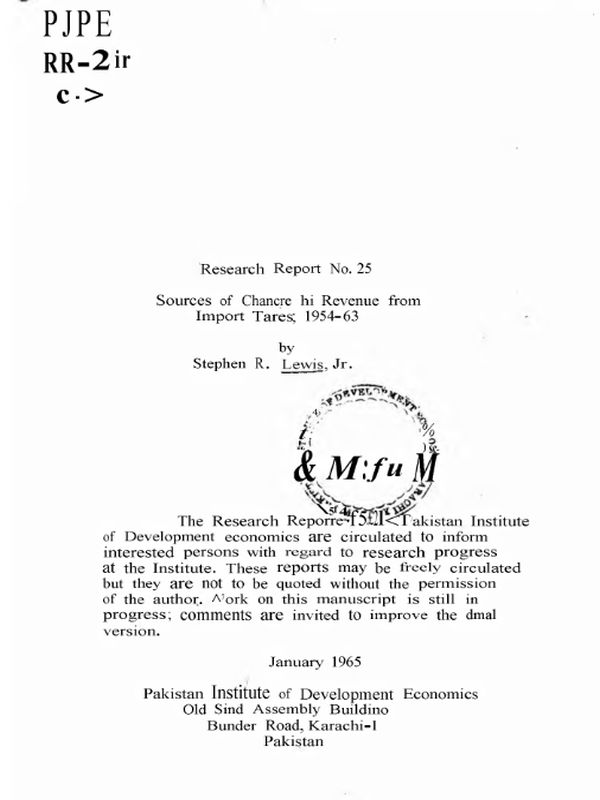Sources Of Change In Revenue From Import Taxes, 1954 To 1963
INTRODUCTION
Mien import substitution in industrial goods is taking place at a rapid rate due largely to indirect tax policy, there are certain implications for government revenue, both in terms of the sources of revenue and the rate of revenue growth. If import substitution results in the replacement of a flow of highly taxed imported goods by an equal flow of J Lightly taxed domestic goods, there would be a loss of-revenue from indirect taxes. This loss can be offset in part by taxing profits in the import substituting industries. Alternatively, the same total revenue can be collected if the flow of domestically produced goods is sufficiently larger than the flow of imported goods it replaced. Both of these alternatives may be, in some degree, in conflict with the aim of promoting saving, or of restricting consumption!/ A broader view of “import substitution”, measured by *the changes in the percentage of total supply of a commodity group that was supplied by domestic production, would lead to less obvious conflicts between policy goals, but would presumably have similar effects. If the flows of goods (not flows of income) are to be taken as the tax base, the larger the share of more lightly taxed domestic production in total Cl-w cf. g. ‘cjs’ it > lower will be . the effective tax rate on the total flow, lius, while it is encouraging to see indirect tspc revenue from domestic production rising • very rapidly and its share increasing in total revenue from indirect taxes fcbji one must be aware of the fact that, per unit flow of
goods in the economy there is a decrease in effective tax rates.
For Full Text Download PDF




